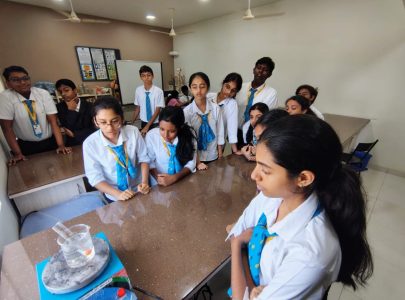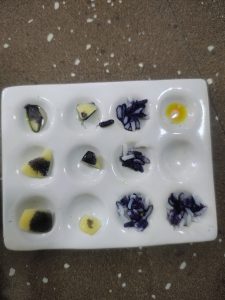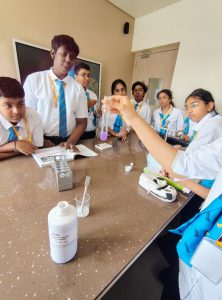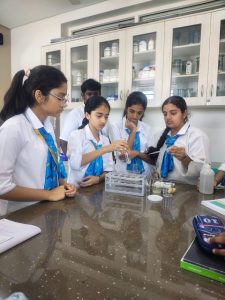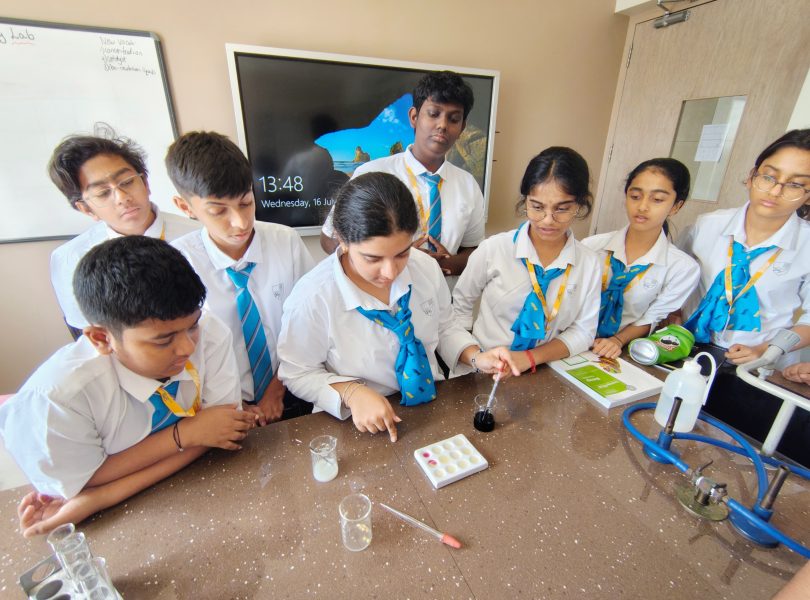In the world of biology, food is more than taste — it’s a mystery of molecules waiting to be unveiled. Food tests act as tools to decode this hidden story, revealing the chemical fingerprint of nutrients. These simple, color-based experiments help identify the presence of carbohydrates, proteins, fats, and vitamins — essential components of our diet.
Iodine is the ink of revelation. It glides over the surface of food like a poet’s pen, and when starch is near, it blossoms into a blue-black bloom, uncovering the quiet strength of carbohydrates beneath the surface. Benedict’s solution is fire and transformation. When heat awakens it, it turns from blue to blazing orange-red, exposing reducing sugars that were once hidden — a true alchemy of energy. Biuret is the voice of structure. It flows in quietly, then transforms into purple whispers when it senses protein — the building blocks of life taking form before our eyes. Fat, ever elusive, reveals itself through the ethanol emulsion test, where clarity turns cloudy — a white fog that signals the presence of lipids, as if the food’s true richness finally exhales. Vitamin C, the silent guardian, erases the bold blue of DCPIP, fading into transparency — a gentle disappearance that confirms its protective role in fruits and health.
These tests don’t just change colors — they change minds. By witnessing these molecular metamorphoses, students of grade 9 gain deep insights into the composition of food. They learn to think critically, observe closely, and appreciate the invisible chemistry that fuels life. This hands-on exploration turns abstract concepts into personal discovery, building both scientific literacy and a sense of wonder.
